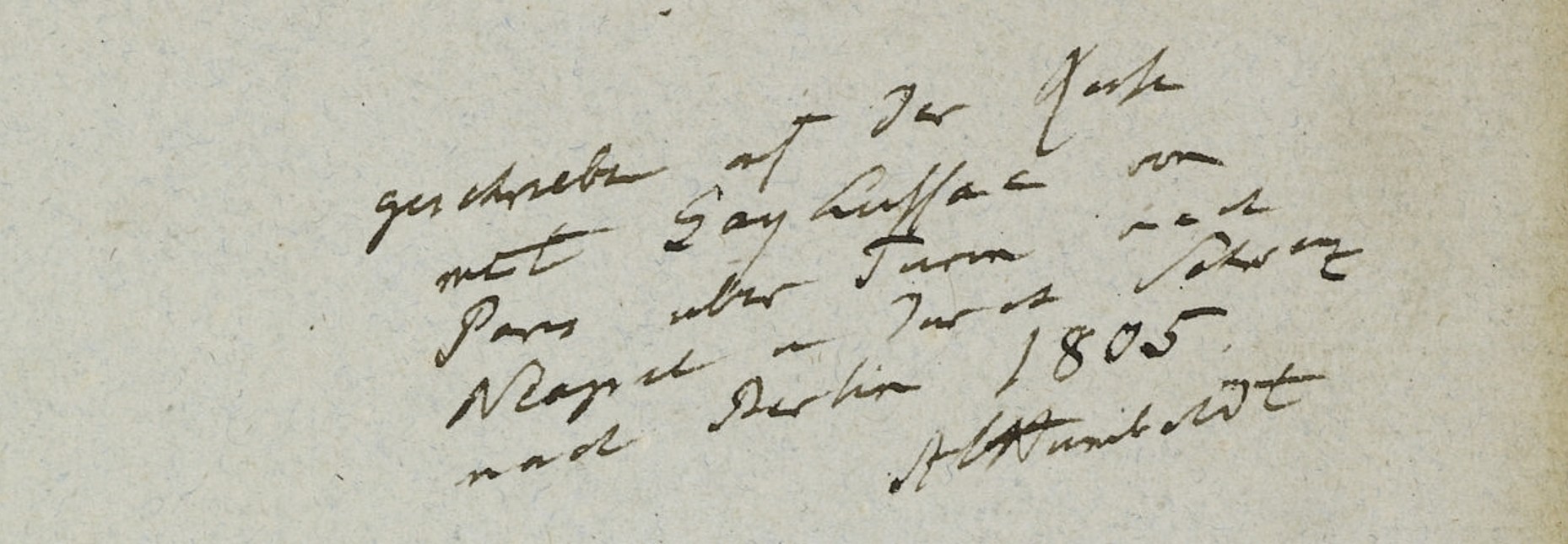 Berlin State Library (Staatsbibliothek zu Berlin – Preußischer Kulturbesitz)
Berlin State Library (Staatsbibliothek zu Berlin – Preußischer Kulturbesitz)
Edition
In March 1805, about seven months after his return from America, Humboldt sets
out in Paris for a journey to Italy. He is accompanied by the chemist Joseph-Louis
Gay-Lussac and the geographer Franz August O’Etzel. The route leads through
several stops first to Rome, where Humboldt’s brother Wilhelm is Prussian envoy.
In Rome, geologist Leopold von Buch joins the small travel group. Humboldt’s notes
from this time, bound in volume II and VI of his American Travel Journals, reflect
the versatility of Humboldtian Science. In Roman museums and other art
collections, he compares the products of indigenous cultures, which he had
encountered in South America, with those of the classical European antiquity.
Later on, the journey, amongst other purposes, is dedicated to comparative
volcanological studies, including the ascent of Vesuvius and the observation of
its eruption in August 1805. Humboldt and Gay-Lussac repeatedly carry out chemical
analyses of the seawater and the composition of the atmosphere, which is published
in the same year. They also attempt to determine the influence of different rocks
on the earth’s magnetism. Via Naples and Rome, the trip leads back to Berlin,
where Humboldt arrives on November 16, 1805, after an absence of more than nine
years.
To the edited text